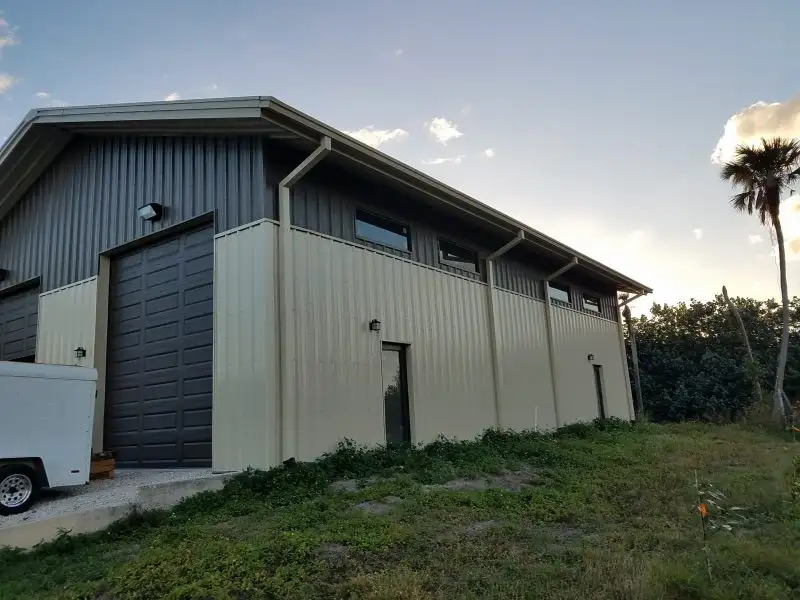The Metal Shed Guide: Sizes, Options, and Prices

The Metal Shed Guide: Sizes, Options, and Prices
Looking for a simple, durable, and cost-effective storage solution?
A metal shed might be the perfect fit for your needs. In this guide, we'll walk you through why a metal shed is a great option, the sizes available, additional customization options, and what you can expect in terms of pricing.
Why Choose a Metal Storage Shed?
Metal sheds offer a host of benefits that make them an attractive option for homeowners and businesses alike. Here’s why you should consider a metal shed:
Cost-Effective: On a per-square-foot basis, metal sheds are generally cheaper than other storage options.
Quick Assembly: These sheds are typically easy to assemble, often requiring just one person.
Durable: Metal sheds are less likely to suffer from weather damage, which contributes to their longer lifespan compared to wood or plastic sheds.
Low Maintenance: Once installed, metal sheds need minimal upkeep and are more resistant to the wear and tear that can affect sheds made from other materials.
Common Sizes of Metal Sheds
The size of your metal shed depends on its intended use. Here are some common sizes and their typical uses:
8×10: A compact option perfect for storing gardening tools and small outdoor equipment. Kits for these sizes are available and easy to assemble on-site.
12×16: This larger size provides more storage space, often used as a small workshop, motorcycle garage, or even a small office.
12×20: Ideal for parking a car or storing larger equipment. This size may require a reinforced floor and lockable doors to ensure security.
If you need a custom size, many suppliers offer the option to design and build a shed to your exact specifications.
Common Materials for Metal Storage Sheds
Galvanized Steel: The most common material, galvanized steel is great for preventing rust and providing long-term durability.
It's perfect for larger projects or sheds exposed to the elements.
Aluminum: A lighter, more affordable option, aluminum is often used for smaller sheds or projects where weight and portability are important.
Larger, permanent structures such as garages or business expansions will typically require more durable materials like steel or galvanized steel, while smaller projects may use aluminum.
Steel Storage Shed Options and Features
Metal sheds come with several customizable features to suit your needs. Here are some options you can choose from:
Patios: Add a patio for level access or as an outdoor working space.
Windows: Bring natural light into your shed by adding windows.
Extra Doors: Add additional doors for easier entry, especially in larger sheds.
Reinforced Floors: If you plan to store heavy equipment or park vehicles, you may need a reinforced floor.
Vents & Insulation: Essential for sheds that need heating and air conditioning, adding vents and insulation can help regulate temperature.
Additional accessories, like painted siding, chimneys for stoves, and electrical installations (fuse boxes, wiring), can also be included to make your shed fully functional.
Installation Process for Metal Sheds
Installing a metal shed is relatively straightforward, especially for smaller models. However, it’s important to follow the manufacturer's instructions to ensure a successful installation.
Steps for Installing Your Shed:
Prepare the Site: Clear the area of debris and level the ground.
Build the Foundation: If your shed is small and doesn't require a full floor, you can skip this step. Larger buildings will require a proper foundation.
Assemble Wall and Roof Frames: Begin by constructing the frames on the ground, then raise the walls and roof frames.
Install Siding: Attach metal siding to the frame using screws or bolts.
Finish the Shed: Add doors, windows, insulation, and any electrical or water systems if necessary.
How Much Does a Metal Shed Cost?
The cost of a metal shed can vary depending on the size, material, and complexity of the design. Here’s a rough guide on what you can expect:
Cost per Square Foot: Metal sheds typically range from $10 to $25 per square foot. Larger commercial buildings or industry sheds may cost less per square foot due to their size and bulk materials.
Factors Affecting Cost:
Size: Larger buildings may have a higher total cost but lower cost per square foot.
Material: Steel tends to be more expensive than aluminum.
Metal Prices: The cost of metal fluctuates, so it’s important to plan ahead and lock in prices when you can.
Complexity: If your shed design requires special features like I-beam supports or non-standard shapes, it will increase the cost.
Additional Construction Costs: While some metal sheds can be assembled DIY, larger buildings will likely require a full construction crew, adding to the overall cost.
Conclusion
Metal sheds are an excellent investment for anyone looking for an affordable, low-maintenance storage solution.
With options for customization and various sizes, a metal shed can meet a variety of needs, from simple gardening storage to large-scale garages or workshops.
Keep in mind that costs will depend on the size, material, and complexity of the design, but the durability and ease of maintenance make them a long-term, cost-effective solution.





